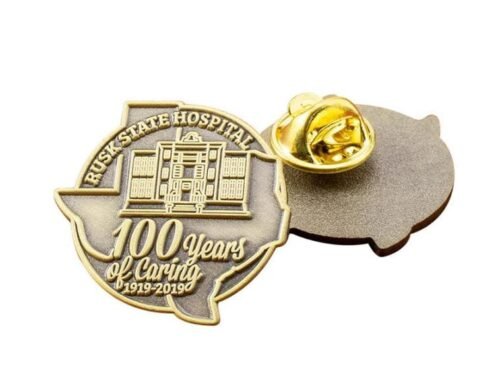When you’re on the quest to design the perfect custom patch, you’re probably laser-focused on things like colors, embroidery details, and size. But, surprise! The backing of your patch plays an equally crucial role. It might not be the showstopper, but it’s what makes that patch stick—literally and figuratively. From long-term commitment to quick fixes, the type of backing you choose determines how your patch functions in the real world.
Table of Contents
The Unsung Hero: Patch Backings
Backings are like the unsung heroes of the patch world. They ensure that your embroidered masterpieces stick where they’re supposed to and stay put. Whether you’re designing patches for a sports team, a military unit, or a company logo, choosing the right backing isn’t just about aesthetics. It’s about how, where, and for how long you want those patches to live on your gear.
From iron-on to Velcro, adhesive to plastic, the right patch backing will save you time, money, and a lot of future patch-related headaches. Each option has its advantages, disadvantages, and best uses. Ready to find out which backing works best for you? Let’s dive in.
Iron-On Backing: Heat and Stick Simplicity
Iron-on backing is probably one of the most popular backing options available. Why? Because it’s ridiculously easy to use. All you need is a household iron and a few seconds to transform your patch into a fashion statement. Perfect for those who want to avoid sewing but still want a somewhat permanent attachment.
How It Works
Iron-on backings come with a layer of heat-activated adhesive. Place your patch where you want it, cover it with a thin damp towel (so you don’t scald the fabric), and press with an iron. In 15-30 seconds, your patch is firmly attached. Boom, you’ve got yourself a new patch-adorned garment!
Advantages:
- Quick and simple: Perfect for the DIY crowd.
- Durable: The adhesive is strong enough to hold up under casual wear.
Disadvantages:
- Not great for rough use: Iron-on patches may not hold up for extended wear, especially on materials that stretch or flex a lot (like sports jerseys or activewear).
- Not suitable for high heat-sensitive fabrics: You can’t use this backing on delicate fabrics like polyester, nylon, or leather without risking burns or damage.
Best For:
- Everyday wear, casual or decorative patches
- Cotton, denim, or similarly sturdy fabrics
Velcro Backing: Attach and Detach with Ease
Velcro is the backing for those who crave flexibility. Military units, police officers, and even fashion-forward patch enthusiasts rely on Velcro for its ease of use. Velcro-backed patches are easy to attach, remove, and reattach, making them perfect for uniforms or gear that needs frequent updates.
How It Works
One side of the patch comes with the Velcro hook, and the other side sticks to your fabric with Velcro loops. Sew the Velcro loop side to your jacket, bag, or uniform, and boom! You can swap patches in seconds.
Advantages:
- Versatility: Easy to swap out patches. Perfect for uniforms that need regular updates.
- Reusable: No sewing, no ironing, just peel off and stick on.
Disadvantages:
- Bulkier than other options: Velcro-backed patches can feel a bit thicker.
- Not as secure: While easy to remove, they can be accidentally knocked off during high activity.
Best For:
- Military, police, tactical gear
- Anyone who wants to switch patches frequently
Adhesive Backing: Peel, Stick, and Go
Ah, the good old adhesive backing. Think of it as the “sticker” of the patch world. This option is for when you need something quick, easy, and temporary. If you’ve ever slapped a patch on for a costume or a casual event, you’ve probably used an adhesive-backed patch.
How It Works
Adhesive patches are essentially fabric stickers. Peel off the backing, slap it on your shirt or bag, and you’re good to go—for a while. Adhesive backings aren’t meant for long-term wear but are perfect for short-term use.
Advantages:
- No tools required: Just peel and stick.
- Great for short-term use: Ideal for costumes, events, or quick fixes.
Disadvantages:
- Temporary: Adhesive patches aren’t durable. They’ll likely start to peel after a few wears.
- Not suited for washing: Once you wash the garment, the adhesive may lose its grip.
Best For:
- Short-term use (events, costumes, conventions)
- Materials that won’t be washed frequently
No Backing: The Sew-On Purist
No backing means exactly what it sounds like—no extra layer to support the patch. You’ll need to sew these patches directly onto your fabric of choice. This option is perfect for those who want the classic, old-school method of patch attachment.
How It Works
You simply sew the patch directly onto the fabric. Because there’s no backing to interfere with the sewing process, sew-on patches tend to be thinner and more flexible than their backed counterparts.
Advantages:
- Long-lasting: Sew-on patches are super secure and will likely outlast any other backing.
- Flexible: Because there’s no backing, the patch conforms better to the fabric, making it more comfortable to wear.
Disadvantages:
- Labor-intensive: You’ll need to sew these on, which means more time and effort.
- Permanent: Unlike Velcro or adhesive backings, sew-on patches are meant to stay put.
Best For:
- Fabrics that stretch, flex, or are subject to rough use (e.g., sports jerseys, jackets)
- High-wear environments
Plastic Backing: Sturdy and Secure
Plastic backing is your go-to if you want your patch to keep its shape forever. A thin layer of plastic is applied to the back of the patch, giving it extra support and durability. While you’ll still need to sew these patches onto your fabric, plastic-backed patches are perfect for people who want their designs to stay stiff and flat.
How It Works
Plastic backing adds a layer of rigidity to the patch, making it stiffer and more robust. You’ll still need to sew the patch on, but the extra support ensures that the patch remains flat over time.
Advantages:
- Shape retention: Perfect for patches that need to stay flat and stiff.
- Durability: Plastic-backed patches can withstand plenty of wear and tear.
Disadvantages:
- Not very flexible: Because of the added rigidity, these patches aren’t ideal for fabrics that bend or flex.
- Sewing required: You’ll still need to attach it via stitching.
Best For:
- Hats, bags, and other items that need a stiff, flat patch
- Long-term, durable wear
Choosing the Right Backing for Your Material
Now that you know the different types of backings, let’s talk fabric. Not all fabrics are created equal, and some materials require specific backing types. Here’s a breakdown:
- Cotton: Cotton is versatile and can handle most backings. Iron-on and adhesive are solid choices, but sew-on works too.
- Denim: Denim loves iron-on backing. It’s sturdy, so it can take the heat required to activate the adhesive.
- Polyester/Nylon/Spandex: Avoid heat with these materials. Velcro or sew-on patches are your best bet.
- Leather: This delicate material doesn’t play well with heat either. Adhesive is your safest option, though sew-on is also viable.
Why the Right Backing Matters
It might seem trivial, but choosing the correct backing for your patch can make or break its longevity and usability. Iron-on may seem like the fastest route, but if you’re working with synthetic fabrics, it could ruin your garment. Velcro might sound convenient, but if you need a permanent fix, it’s not the right option. By understanding the different backings available and which materials they’re best suited for, you’ll ensure that your patch not only looks great but also lasts for years to come.
Conclusion: Stitching It All Together
Choosing the right backing for your custom patches isn’t rocket science, but it does require a little thought. Whether you need something temporary, like an adhesive patch, or something more permanent, like a sew-on or plastic-backed patch, the right choice depends on your fabric, the intended use, and how much effort you’re willing to put into applying it.
Next time you’re designing your custom patch, don’t just focus on the colors and design. Consider the backing, too. It might be the difference between a patch that lasts for years and one that falls off in the wash.





